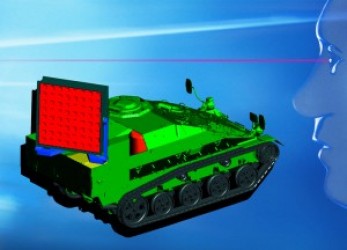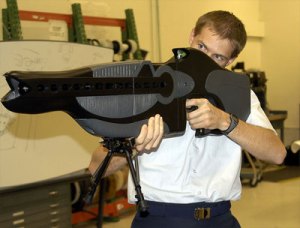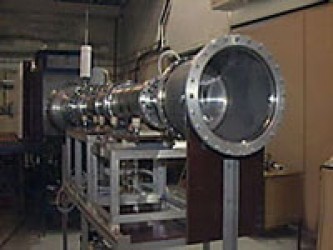Alex Constantine - September 18, 2013
"... The Active Denial System’s potential applications include ground, aerial and maritime asset protection, hostile crowd control and gives forces the ability to urge targets away from desired positions. ..."
JOINT BASE LANGLEY-EUSTIS, Va. - It cannot be heard, seen or smelled, but those in its sights will know it by the intolerable heating sensation they feel from head to toe.
The Joint Non-Lethal Weapons Directorate, from Marine Corps Base Quantico, Va., demonstrated the maritime security application of the Active Denial System, or ADS, at Joint Base Langley-Eustis, Va., Sept. 12.
The technology is a long-range, non-lethal, personnel-deterring device. The system projects a wavelength, which causes targets to feel an unbearable heating sensation. The target suffers no lasting effect. Gen. James Amos, commandant of the Marine Corps, serves as the executive agent of the Department of Defense's Non-Lethal Weapons Program and said he is encouraged by the progress of the Active Denial System.
“I remain committed to ensuring the Department of Defense's leadership is aware of the state-of-the-art technology which is available to the joint force and am bullish about the role of systems such as ADS and how they may play in future operations,” Amos said.
The non-lethal technology showcased a few new capabilities on the murky waters of James River. The demonstration was the first time the system fired from aboard a boat, performed vessel-to-vessel engagement and deterred human targets aboard hostile moving watercraft.
“The support we had from the Army was awesome,” Lt. Cmdr. Sean Kelly, the experimentation officer with the NLWD said.
The Army hosted the event and the system was mounted aboard an Army landing craft utility vessel. After launching, the system engaged targets aboard mock-hostile vessels. Small fishing boats re-enacted unwanted or accidental behaviors, which threaten the safety of military vessels and every one on board. The technology’s range gives nautical personnel the ability to keep hostile targets at bay without having to lethally engage them with machine guns or cannons.
“We executed four very real scenarios,” Lt. Gen. R.T. Tryon, Commander, U.S. Marine Forces Command and U.S. Marine Forces Europe, said. “These events are things maritime forces like the Navy and Coast Guard deal with daily.”
The Active Denial System’s potential applications include ground, aerial and maritime asset protection, hostile crowd control and gives forces the ability to urge targets away from desired positions. Leadership from all branches of the Department of Defense, Coast Guard and representatives from NATO were present to see the demonstration and could volunteer to step in front of the beam to experience it first hand.
“The active denial system creates what can only be described as a very uncomfortable, almost intolerable heating sensation,” Tryon said. “I have been exposed five or six times, and when you are in the beam you cannot stay there long.”
More than 11,000 subjects encountered the system’s beam throughout the course of its more than 15-year-long development. During a health brief, visitors who volunteered to be fired upon learned more facts about the system’s effect on targets:
• The ADS uses non-ionized radiation, which does not cause the development of skin cancer through short or prolonged exposure.
• The shallow skin penetration of the 95-gigahertz wavelength only goes about one-sixty fourth of an inch deep, or about the thickness of three sheets of paper, which has no effect on reproductive organs or unborn children.
• The human intrinsic reflexes to blink, taking roughly one-fourth of a second, and the behavior to turn the face away from heat protects the eyes from the ADS.
"The DOD is committed to the advancement of our non-lethal inventory and will continue to promote game-changing scientific achievements such as the Active Denial System, " Tryon said. "The long-range, non-lethal effect provided by the Active Denial System has operational relevance in a wide-range of scenarios and we must strive to provide our forces with such options in addressing future complex operating environments."
The ADS can help airmen protect their aircraft, aid Coast Guardsmen in catching drug runners, help soldiers protect forward operating bases and help the Navy with vessel and anti-terrorism force protection measures.
“The applicability crosses all service boundaries,” Kelly said.
The ADS future maritime applications may also include protecting oil rigs, cargo ships or other vessels, which may need to deter hostile actions. To date, the DOD has built two systems for demonstration.
“In today's complex operating environments, we must provide commanders a greater range of escalation-of-force options to accomplish the mission and reduce civilian casualties and collateral damage,” Amos said.








No comments yet.